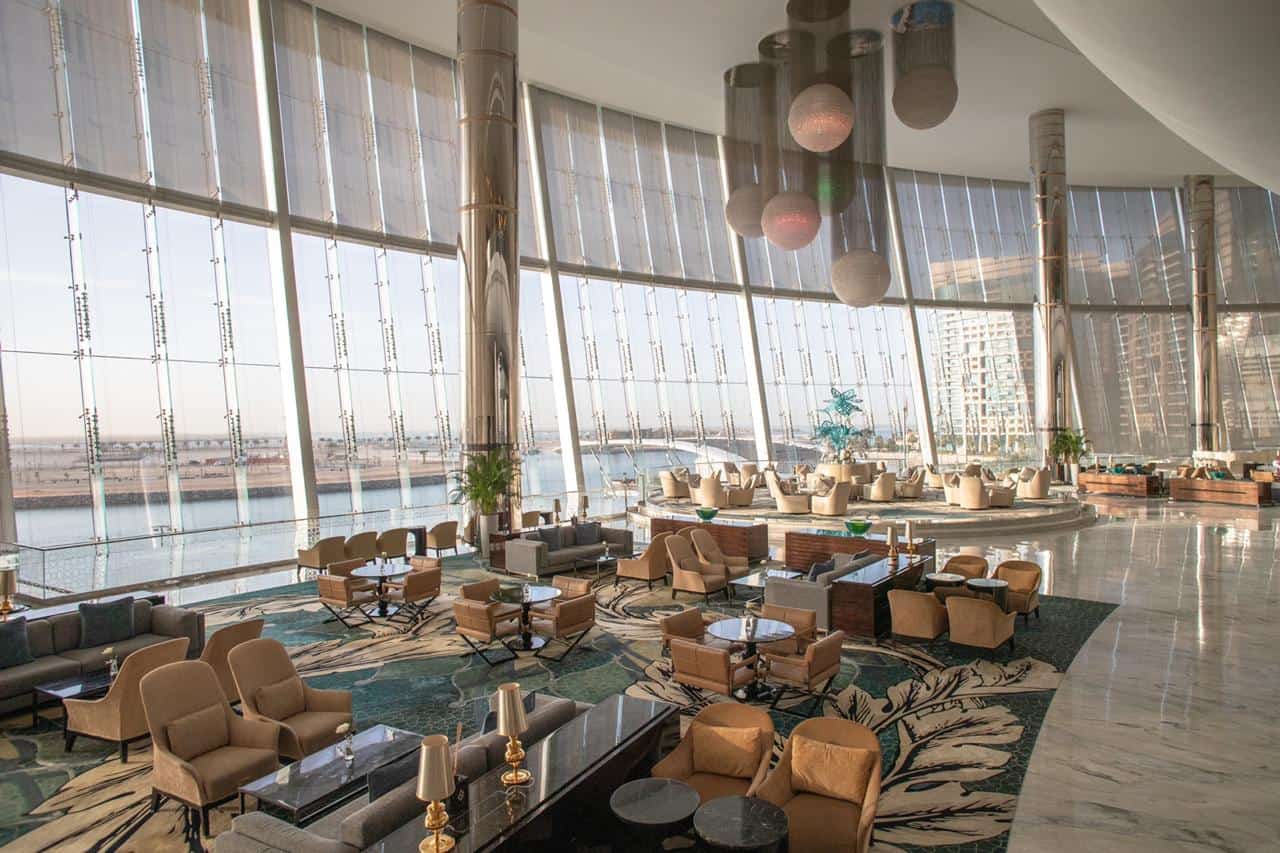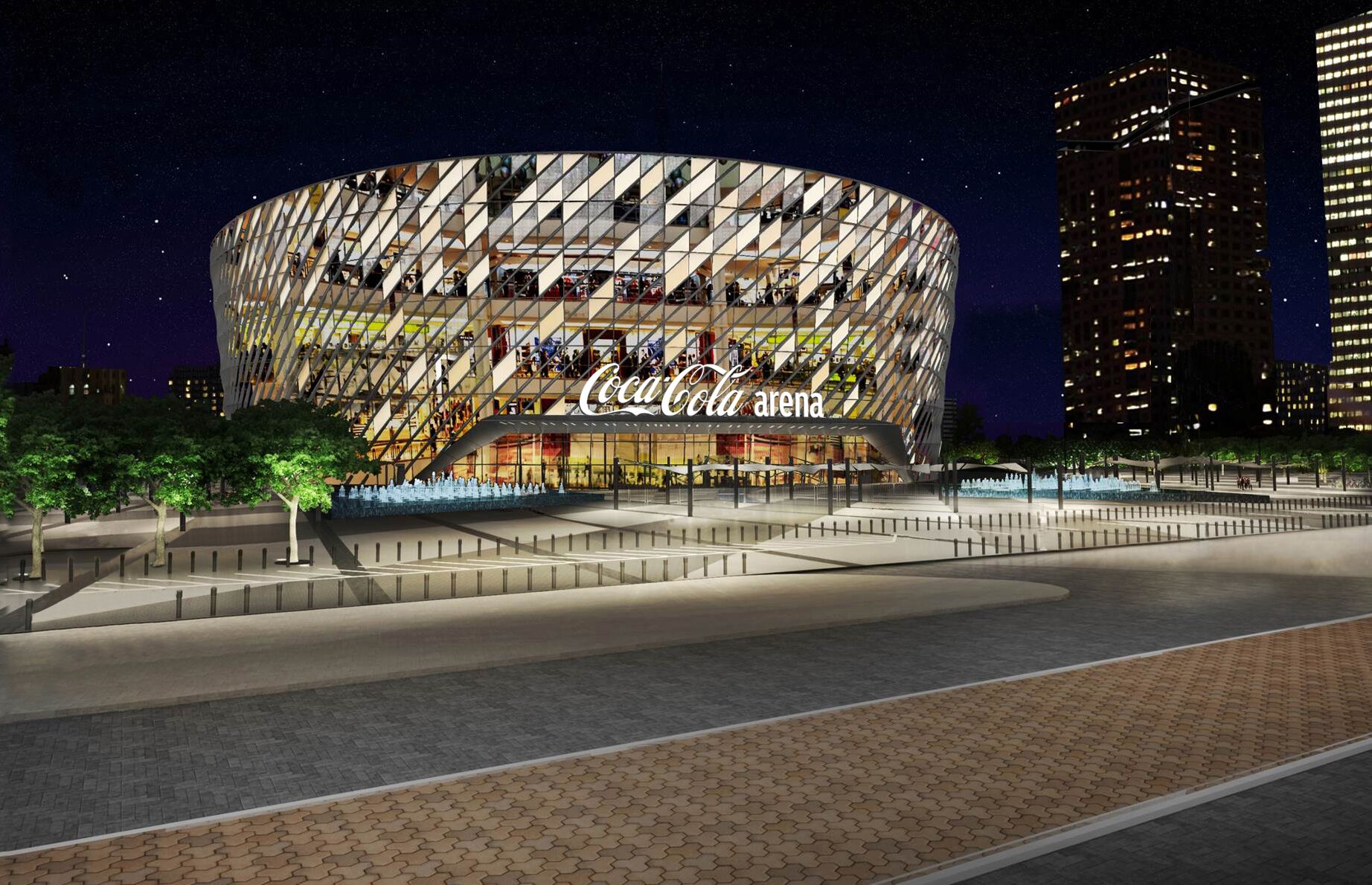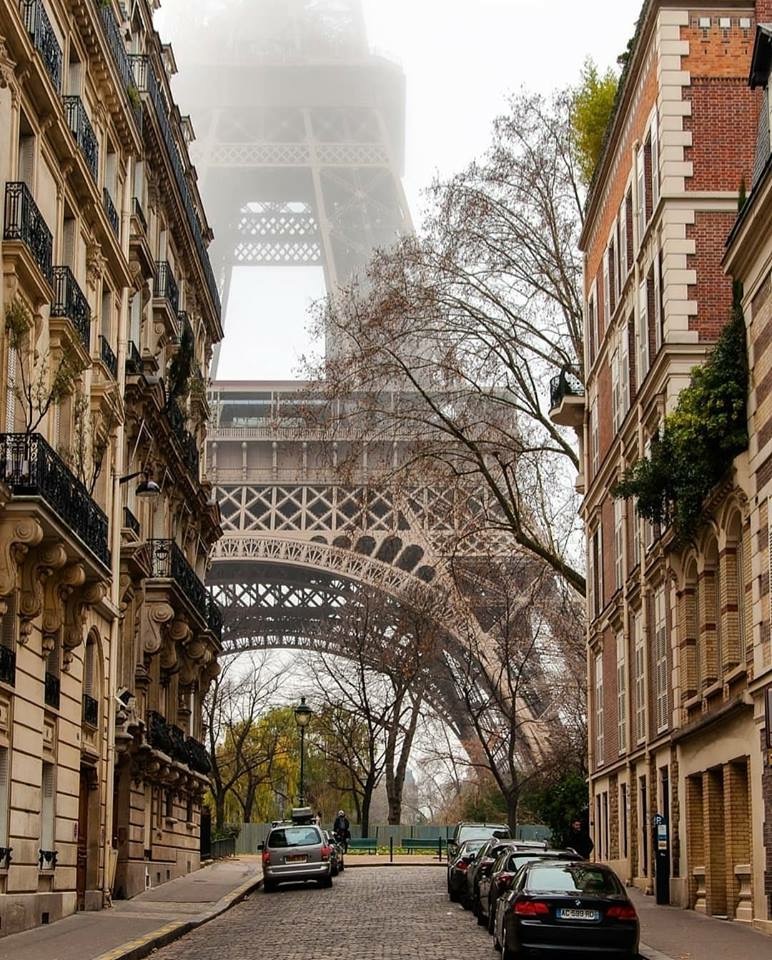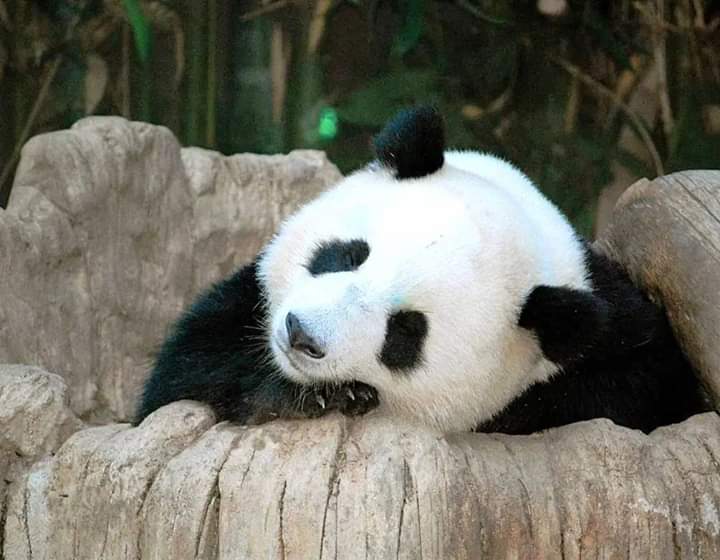Mohammed bin Rashid: The Museum of the Future is a global icon that speaks Arabic
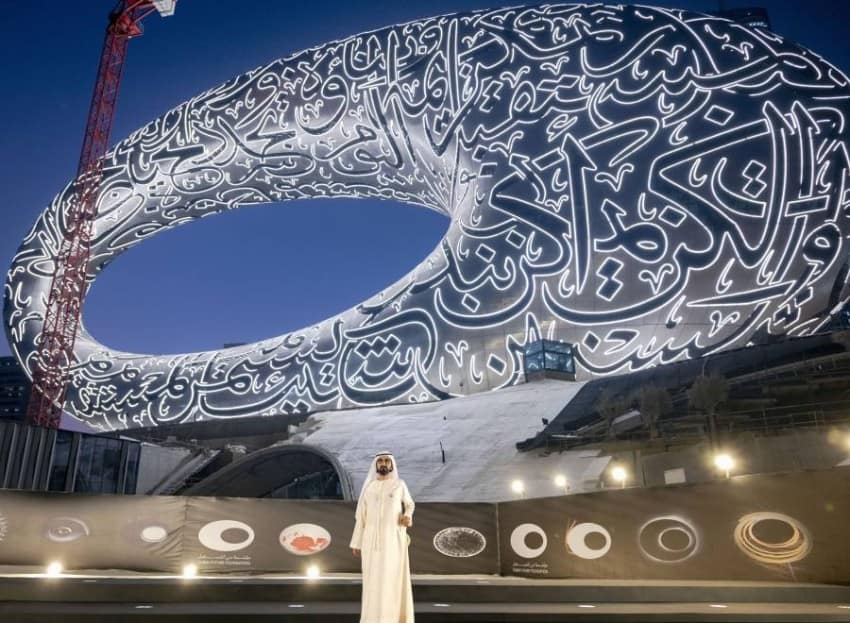
His Highness Sheikh Mohammed bin Rashid Al Maktoum, Vice President and Prime Minister of the UAE and Ruler of Dubai, may God protect him, affirmed that the Museum of the Future represents a global architectural and engineering icon that will be harnessed to build human miracles capable of using the Museum to build a better future. Pointing out that the museum is an Emirati piece from the future of construction engineering.
His Highness said: The Museum of the Future speaks Arabic and combines our Arab originality with our global ambitions.
His Highness added, "Our goal is not to build engineering miracles, our goal is to build human miracles that can use the museum to build a better future. Dubai continues to build, the Emirates continues to achieve, the world continues to move and progress for those who know what they want.
This came during the presence of His Highness, who placed the last piece at the front of the Museum of the Future, marking the preparation for the final stage of the construction of the future edifice, which embodies the level of engineering and scientific creativity in it, the leadership of the UAE in creating unique engineering and architectural achievements, its design and manufacture. It has become a prominent landmark added to the distinguished urban landmarks of the Emirate of Dubai.
His Highness added, "The Museum of the Future, with the Emirates Towers, the International Financial Center, and the Commercial Center, will be the most innovative, creative and influential region in creating the future, and advancing the process of sustainability and development." He stressed that the museum gained international fame before its opening, thanks to its unique design, and it will be a title of urban excellence upon its opening.
His Highness inspected the developments of work in the external facade of the museum at the project site in the Dubai Future District, where he listened to a detailed explanation from the team of the Dubai Future Foundation, which is supervising the project, about the most prominent design aspects, engineering methods and advanced technological solutions that were employed in achieving the most streamlined urban landmark in the scientist.
His Highness was accompanied during his tour by His Highness Sheikh Hamdan bin Mohammed bin Rashid Al Maktoum, Crown Prince of Dubai, Chairman of the Executive Council and Chairman of the Board of Trustees of the Dubai Future Foundation, His Highness Sheikh Maktoum bin Mohammed bin Rashid Al Maktoum, Deputy Ruler of Dubai, and Mohammed Al Gergawi, Minister of Council Affairs. Ministers, Vice Chairman of the Board of Trustees, and Managing Director of the Dubai Future Foundation.
Urban properties
The Museum of the Future is an engineering miracle on an area of 30 square meters, 77 meters high, and consists of seven floors. It is characterized by the absence of columns inside, which makes its engineering design a milestone in urban engineering. It is also linked to two bridges, the first extending to Jumeirah Emirates Towers with a length of 69 meters, and the second linking it with the Emirates Towers metro station, with a length of 212 meters.
The museum is fed by 4 megawatts of electricity that was produced through solar energy, by a special station connected to the museum, built in cooperation with the Dubai Electricity and Water Authority, which will make the museum, upon completion, the first museum in the Middle East to obtain platinum accreditation for leadership in the design of energy systems and environmental protection, « LEED, the highest rating for green buildings in the world.
The garden surrounding the museum houses 80 species and families of plants, equipped with a smart and automated irrigation system at the latest level.
Museum facade
The facade of the museum consists of 1024 pieces of art entirely manufactured by robots, and executed in a unique way, as the facade panels were produced using automated robotic arms in a precedent that is the first in the region. Each panel consists of 4 layers, and there are 16 process steps to produce one panel. Each panel is installed and installed separately, as the duration of the installation of the external facade lasted more than 18 months. The total facade area is 17,600 square metres. The facade, which spans an area of 17 square metres, and is lit by 14 meters of light lines, is adorned with inspirational quotes by His Highness Sheikh Mohammed bin Rashid in Arabic calligraphy. The Arabic calligraphy was designed by Emirati artist Matar Bin Lahej. Among the sayings of His Highness engraved on the outer wall of the museum: “You will not live for hundreds of years, but you can create something that lasts hundreds of years.” The future belongs to those who can imagine, design and implement it. The future is not waiting. The future can be designed and built today.”
International Awards
The Museum of the Future is an unparalleled urban icon in the world, and it won the Tekla International Award for building as a unique urban model, as there is no building in the world that was built based on similar techniques, and relied on special techniques that distinguished it from other buildings. According to Autodesk, the design software, the Museum of the Future is one of the most innovative buildings in the world.
Designed by architect Sean Killa, the building offers visitors a first-of-its-kind interactive experience.
Geometrical miraculous
The architectural and engineering design of the museum is an engineering miracle, as it appears, after the completion of its external facade, as if it is floating without foundations, pillars, or columns, thanks to the use of the latest technologies that reinforced its title of “the most fluid building” in the world.
In designing its iconic exterior, precision engineering calculations, advanced software on supercomputers, and ultra-fast processors have been used to calculate the best curves formulas, the most robust and responsive in the design of its foundations, solid metal frame, and unique exterior facade.
An incubator for ideas and technology
Contrary to the usual concept of museums that display behind closed windows the eras, artifacts and encounters of the past, the Museum of the Future is distinguished from traditional museums around the world by being the first to provide an incubator for innovative ideas, technology and future projects, and a global destination for inventors and entrepreneurs. It also provides its pioneers with a range of immersive experiences that enable them to learn about the future technology that will change people's lives.
unique style
The museum, with its unique design, which simulates in its fluidity the arts of Arabic calligraphy and the luster of liquid metal, is one of the most famous modern urban designs in the world and the most distinguished by the unique elements of the shape of its external facade designed in a special engineering style, employing the latest advanced technologies in the design and construction processes, and developed its engineering structure, in cooperation between BAM International is the main contractor, and Borough Happold Consulting Engineers is the architect of the structure.
immersive experience
The museum includes seven floors that employ the latest virtual and augmented reality technologies, big data analysis, artificial intelligence and human machine interaction, to provide visitors with immersive experiences that answer many pressing questions related to the future of humans, cities and human societies, life on planet Earth, and up to to outer space.
sustainability
The museum's design is a model of sustainability in future creative design, as its external facade was designed from advanced glass manufactured with new technologies, specifically to improve the quality of internal lighting and external thermal insulation. Energy-saving LED lights were also used in the external panels, extending 14 kilometers to give the facade of the Museum of the Future an attractive appearance, especially at night.
The museum also provides an integrated infrastructure to supply electric vehicles with clean energy. The building generates renewable energy from sunlight, through an independent station for the museum to collect solar energy, and the lighting systems can be fully controlled, adding an aesthetic touch to the design of Arabic calligraphy and enhancing the splendor of the exterior design from various sides.
Complete flow
In an advanced technology unprecedented in innovative construction in the world, the museum’s structure is unique in its complete fluidity, in which the glass facades, thermal, air and water insulation systems and the metal structure are merged into one monolithic mass, like a giant drop that shines like mercury metal.
Future technologies
During the construction of the Museum of the Future, futuristic technologies were used that represent the interface of technology in the various stages of design, establishment, construction and cladding. The requirements for completing the internal structure were calculated, using advanced algorithms, to include 2400 pieces of cross steel, and thousands of triangular pieces that enhance the durability of the external structure.
Eye on the future
The museum is located in a privileged location in the heart of Dubai, eyeing the future and its opportunities for the human community, within the "Dubai Future District" area, which includes Emirates Towers, District 2071 of the Dubai Future Foundation, Dubai World Trade Center, and Dubai International Financial Center, in an area that is the largest. Regionally to anticipate, design and manufacture the economy of the future.

